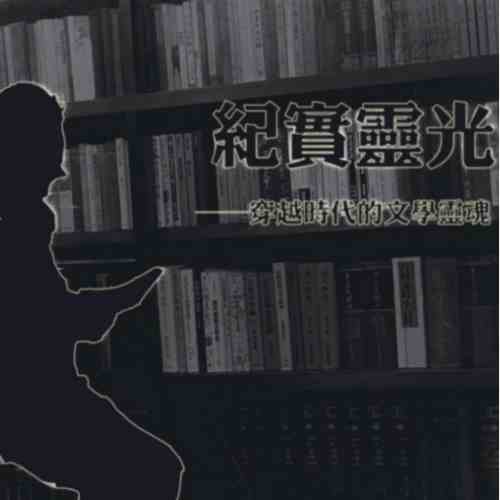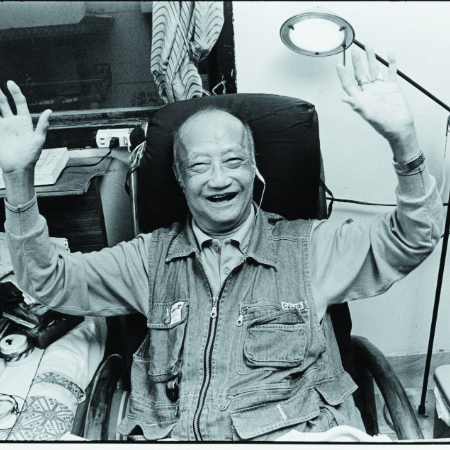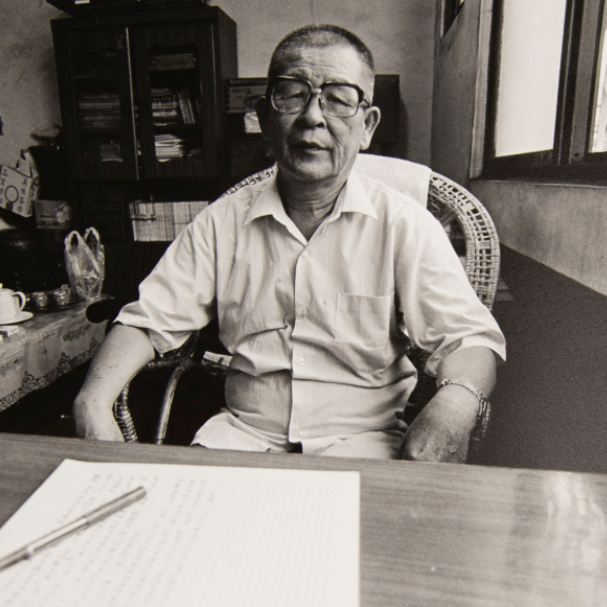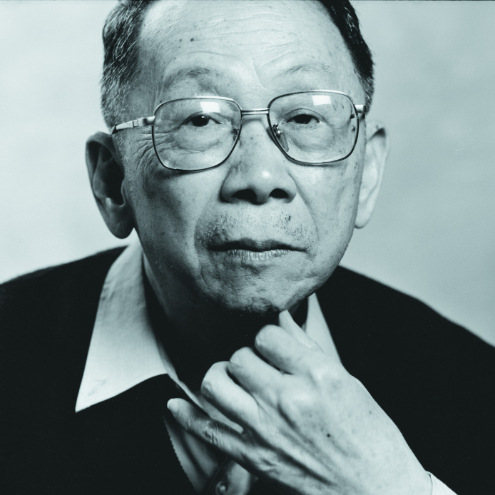Introduction
Faces of Literature is a photography project featuring Taiwanese writers' portraits hosted by the preparatory unit of the National Museum of Taiwan Literature, known as the Institute of Cultural Heritage Preservation at the time, between 1998 and 2001. For this project, documentary photographer Lin Po-liang took photos of a total of 23 Taiwanese writers. At this exhibition we will show the photos of nine such writers born during the Japanese Rule. They are: Wu Yung-fu, Chung Chao-cheng, Wang Chang-hsiung, Dupan Fangge, Yeh Shih-tao, Liao Ching-hsiu, Cheng Ching-wen, Chen Huo-chuan, and Chen Chien-wu.
Exactly because the writers were born in that period, due to change of a political regime and oppression against the language used by the previous regime, the writers were forced to use Chinese instead of Japanese when they wrote, making them a “cross-language generation.” The writers needed to learn a new language from the start, so as to cross that giant linguistic gap. Yeh Shih-tao, for instance, learned Chinese by reciting dictionaries and practicing after Dream of the Red Chamber – a tough though practical way to acquire a new language. The writing logic and the cultural mindset of each language are significantly different, and this affected the writers' lives significantly. Nevertheless, step by step, they leveraged their passion for literature, breaking free from the restraints cast upon them by others, and eventually started to write again.
It should be noted that, while facing the same circumstances after the war, each writer had different cross-language experiences previously. The writers who immersed in Japanese-speaking environs must spend more effort to switch to Chinese, because their linguistic gap was much wider. It took them much longer time to make the transition. Nevertheless, these writers were still equally passionate about literature. In their writings, one can find the writers' enthusiasm and their thoughts on life. The writers all strove to turn the weight of a new language into momentum for writing. In literature, they were able to find peace for their solitary minds. This is a unique, heavy phenomenon in the history of literature in Taiwan.
⚯

“I take photos all according to how I feel on site. Intuition is important to me. I can already have certain ideas about a writer the moment I see him or her for the first time. As I start to take photos, I do adjust my views. But in hindsight, my intuition is mostly right.”
Born in Kaohsiung City, 1952, Lin Po-liang is an important documentary photographer in Taiwan. He became a student of renowned painter Hsi Te-chin in 1975, and soon began to study photography on his own. Inspired by Hsi's ideal, “one learns about art through life,” he used cameras as his creative tools. The photos Lin took for this project emphasizes the relationship between a writer and the place in which he or she lives, as well as the writer's background. Most of the photos were taken in places which the writers feel affectionate for. Lin even took photos in the writers' studies, where they devote themselves to producing words throughout their lives. In this way, the photographer was able to make images which are not only rich in context but also true to the writers' inner worlds. Instead of color photos, Lin used black-and-white film to suggest certain characteristics beyond reality, bringing to his viewers room for imagination. While the writers express themselves through writing, the photographer analyzes them through photos. Faces of Literature captures both the faces of writers and their thoughts and spirits beneath their physical appearances. Through fine photographic techniques and observations, each writer's unique sentiments are gracefully revealed, all in a proper exhibition space. The auras of photography and literature seem to glow upon one another in tranquility.
Since 2004, Lin Po-yang has been invited by the National Culture and Arts Foundation to record and observe community developments and cultural conditions in all parts of Taiwan. Faces of Literature which he was commissioned by the National Museum of Taiwan Literature on the portraits of selected Taiwanese writers has been widely hailed and acknowledged.

















